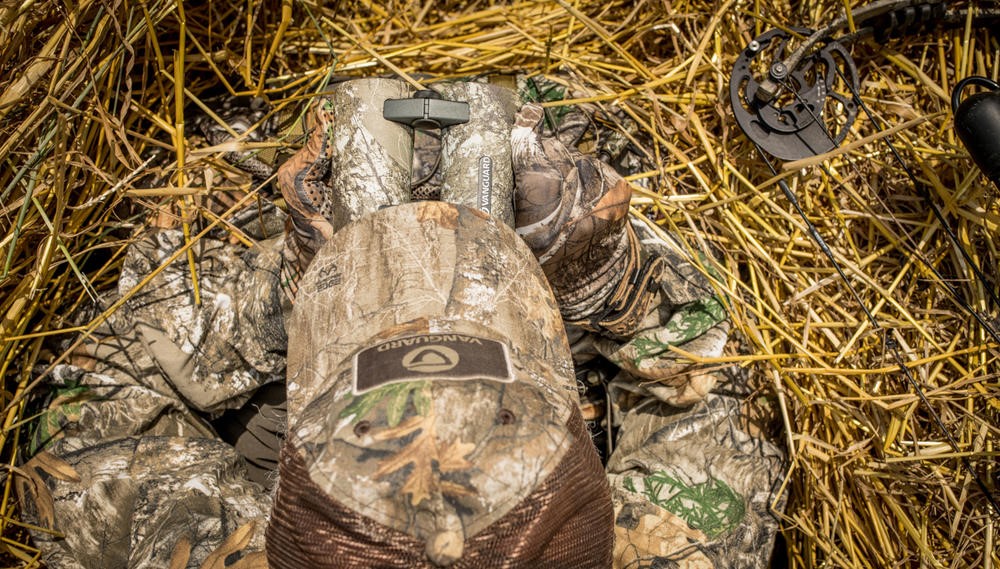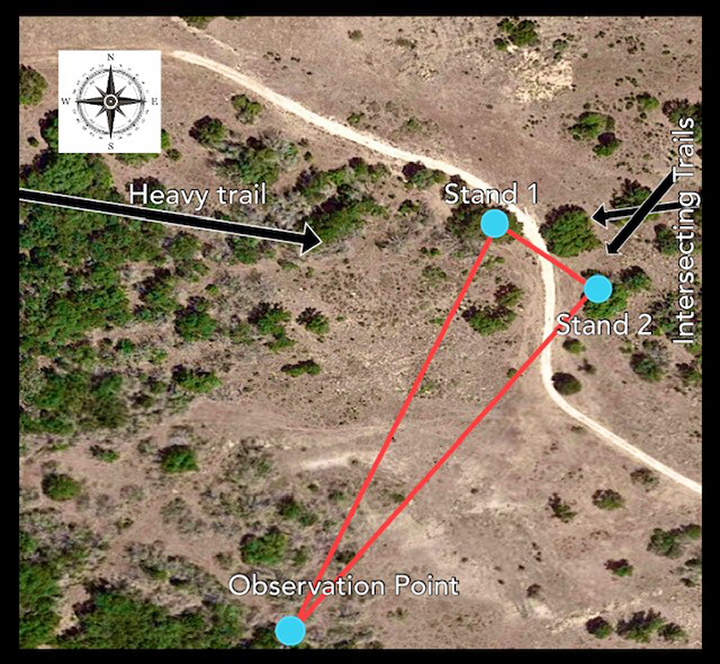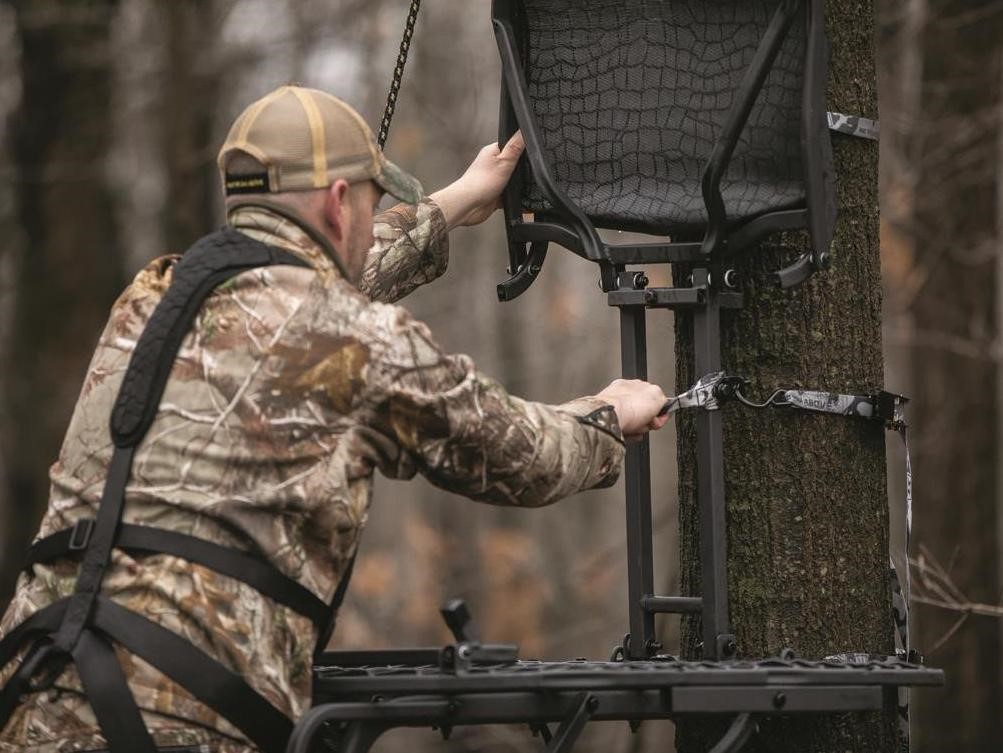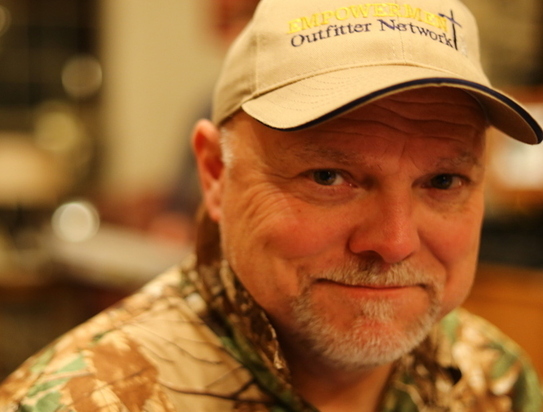Whitetail Bowhunting How-To: The Triangle Ambush Setup
Whitetail bucks can be hard to catch up with – especially when your goal is to seal the deal with a bow. There are so many variables to contend with: wind, scent, weather, stand location, and entry and exit routes. Then there are the many variables related to successfully drawing on and arrowing a buck. For those who specifically pursue mature whitetails, these variables can be super-charged.
I’ve taken my share of bucks, but my decent-at-best skills are trumped only by my inability to create successful setups right out of the chute.
Let’s look at a few of the common challenges we can head off on the front end, followed by a setup option that can often remedy these challenges.
The Challenges
Wind Direction: I mention this one first because it has sabotaged many a deer hunt for me, whether I ignored wind direction, or it unexpectedly changed during a hunt. Ask any serious deer hunter, and they will agree that this simple variable is a big one.
Entry and Exit Routes: Oh, if I had only understood the importance of entry and exit routes in my early hunting days. Just like stand placement, the pathways to and from your stand are crucial from the perspective of a deer’s scent and sight. The hunt can be ruined based solely on your trip from the truck to your stand. Though some areas have few good options, you can usually at least find an optimal entry and exit point if you do your homework.
Uncertainty over Buck Travel Patterns: Sometimes you think you have a good idea of where to set up for a buck. There are times when you’ve seen a good buck in the general area. There are others when the likes of scrapes, rubs, heavy trails, and camera images have you feeling pretty pumped, but you still need to make sure you are in the position to make a shot of 20-50-yards (based on your abilities). Make sure you have the most accurate idea of travel patterns before sitting down for long hunting sessions.
Forfeiting Hunting Opportunities Due to Conditions: Let’s face it, if you’re serious about chasing a mature hit-list buck, there are times that you need to make the decision to stay home. This happens when the wind is not right for you or a prospective buck that enters your shooting range. It’s a tough decision to make when it comes to the likelihood of sitting upwind of a nice buck.
As an archer, I am always in search of tools or techniques that stack the odds in my favor. To that end, I use what I call the Triangle Ambush Setup. I didn’t invent this setup, but I lean on it heavily. Though all terrains and settings are a little different, there is often a way to employ this setup.
The Setup
The Triangle Ambush Setup is simple. The three points of the triangle represent a long-distance observation location (at the point) and two alternative stand locations (one on each of the remaining to points). You’re already thinking, “I’ve done this before.” If so, good. It’s a great approach that will often remedy the above-mentioned bowhunting challenges. If not, you should give it a try
Triangle Ambush Setup Requirements:
An overhead view of the property
Good optics
Patience and common sense
Two stands (tree stand, tripod stand, popup, etc.)
Trail cameras capturing different routes around your two setups (optional)
Determine the Hub Area
To start, consider the main hub section you want to hunt. These stretches are usually determined by previous experience and viewed bucks. Regardless of how familiar you are with the property, refer to an overhead view of the area to see how the main hub relates to its surroundings. Popular hub areas include feeding stations, food plots, and known pinch points.
Step Back
Refer to your overhead map view (and area knowledge in general) and look for an observation location within cover 200-yards or more from your hub area. Use the existing brush, canopies, or even a pop-up blind to view from. Now it’s time to sit and watch. With patience and good optics, two or more sits should tell you a lot about the way bucks move around the hub area. Now, you can start to plan a couple of alternative bowhunting setups.
The Setups
When picking the sites, use the given terrain and cover features to your advantage. For example, you might use an oak mott for an elevated stand at one point and heavy brush suited for a popup blind for the second point – whatever the area offers. Place your stands somewhat opposite of one another based on the travel patterns you’ve witnessed from your observation point. In the best of circumstances, the two stands can be situated 60-100 yards apart.
Directional Matters
Consider your stand placement regarding direction (north-south-east-west) and possible wind conditions. The two setups represent options for alternative deer travel as well as allow for differing winds.
Doubling Down
While I prefer to chase hit-list bucks on my own, this approach can be concurrently used by two bowhunters. After all, in those cases where a buck commonly takes one of two main routes, coverage by two hunters (one in each stand) in the hub section can increase the chances of a quality shot. This setup is much riskier, so you’ll want to make sure conditions are right for both locations. If you opt for this bolder approach, minimize your footprint with good scent control and common sense. Don’t take this approach if it will cost you a buck.
Conclusion
Again, the Triangle Ambush Setup is not new, but it offers choices to the bowhunter. Choices are good for this fun, yet sometimes complicated, endeavor. It is a particularly great way to approach bowhunting on new grounds. Every time you find yourself devising a new setup, get in the habit of surveying the area to see if it’s a good fit for the Triangle Ambush Setup – on the front end. With a little imagination and extra field time, you will find a way to employ this setup more often than not.
Sound easy? It is. This method will increase your chances of putting a good buck on the ground or, at a minimum, keep you from having to stay home when conditions aren’t in your favor.
Based in Texas, Jerald Kopp is President of 1st Light Hunting Journal. His articles cover a variety of topics about hunting and the outdoor lifestyle. Jerald is an avid outdoorsman with deer hunting and whitetails being by far his greatest passion. He was introduced to hunting and fishing at an early age and has been enjoying it for 40+ years. In 2005, he established the Empowerment Outfitter Network (EON) – a faith-based non-profit organization that provides hunting opportunities for disabled and terminally-ill children and youth. When not hunting, he spends his time traveling and enjoying life with Amy, his wife of over 30 years. Jerald and Amy have two adult daughters and a son-in-law.




